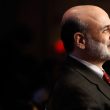The Federal Reserve’s decision not to taper quantitative easing telegraphed a mixed signal to markets about policy guidance while tempering forward economic growth expectations. Dramatically lower interest rates can be expected.
by Scott Minerd, CIO, Guggenheim Partners LLC
Yesterday’s message from the Federal Reserve was both a surprise to the markets and contradictory. Fed Chairman Ben Bernanke made clear that the central bank’s primary monetary policy tool is forward guidance. However, in choosing not to taper the asset purchase program despite previous indications of an eventual reduction, the Fed raised questions about the credibility of forward guidance.
This action will likely have two outcomes for markets. The first we saw begin immediately following the announcement – and that is that interest rates moved materially lower and could continue to do so. The other is that volatility will escalate because market participants will continue positioning portfolios based on what the Fed says can be expected, but will also be forced to try to guess whether the Fed will alter its course depending on the economic data.
Yesterday’s announcement of ongoing accommodation was positive in the short-run for stocks, but I believe it will prove to be better for bond investors over a longer time horizon. The Fed opted not to taper because the economic outlook is weakening, particularly in housing. The Fed also reflected this view by lowering its economic forecasts. The result of lower growth will likely be reduced corporate earnings and thus, lower share prices. Lower growth will also keep downward pressure on interest rates, which is constructive for fixed income. It is my view that the yield on the 10-year Treasury bond could ratchet back down to or below 2 percent before this rally is over.
Chart of the Week
Ongoing Downgrades for the Fed’s Growth Outlook
Since the U.S. Federal Reserve first began to release economic projections three years ago, it has consistently downgraded its outlook. In the latest Federal Open Market Committee meeting, the Fed further lowered its projections for GDP growth in 2013 to an average of 2.15 percent, compared with an average of 4.15 percent from its initial projections in January 2011. Despite a steady decline in the unemployment rate, the continuing downgrades of the growth outlook demonstrates that the Fed has been overly optimistic about the underlying strength of the U.S. economy, which supports the decision to delay the tapering of quantitative easing.
THE EVOLUTION OF THE FOMC’S PROJECTIONS ON U.S. REAL GDP GROWTH IN 2013*

Source: Federal Reserve, Guggenheim Investments. Data as of 9/19/2013. *Note: The projection range is the central tendency of the FOMC’s economic forecast, and middle-points of the range are the average of the central tendency projections.
Economic Data Releases
Mixed U.S. Data Not Strong Enough for Fed Taper
- August retail sales were less than expected at 0.3%. Excluding autos and gas, sales were up just 0.1%.
- Existing home sales unexpectedly rose in August to an annualized pace of 5.48 million, up 1.7% from July.
- U.S. housing starts increased in August to an annualized pace of 891,000, but growth was slower than expected at 0.9% from July.
- Building permits fell more than expected in August to 918,000, a 3.8% drop.
- The NAHB Housing Market Index remained at an eight-year high of 58 in September, the first month without positive growth since April.
- Mortgage applications jumped 11.2% last week after plunging to a five-year low. Refinancing and purchase applications were both up, but neither recovered last week’s losses.
- University of Michigan consumer confidence fell for a second month in September, down to 76.8. The decrease was the largest this year.
- U.S. industrial production increased 0.4% in August, the best month since February.
- The Empire State Manufacturing Survey fell for a second consecutive month to 6.29 in September, missing estimates of an increase.
- The Philadelphia Fed index jumped to 22.3 in September, the highest level in two and a half years.
- Initial jobless claims rose less than forecast to 309,000 for the week ended September 14th, as two states continued to work through computer issues.
- The Leading Economic Index rose for a second straight month, up 0.7%. Only one indicator, building permits, was negative.
Slow Week of International Data Shows Japanese Recovery Continues
- Euro zone industrial production dropped 1.5% in July, more-than-expected.
- The euro zone’s trade surplus fell for a fourth straight month in July, down to €11.1 billion.
- Consumer prices inched up 0.1% in the euro zone in August, putting the year-over-year CPI at a four-month low.
- The ZEW survey of investor expectations in Germany climbed to 49.6 in September, the highest level since April 2010.
- Industrial production in Italy fell 1.1% in July, the largest decrease this year.
- U.K. retail sales unexpectedly dropped 0.9% in August after increasing the previous three months.
- Japanese export growth increased to 14.7% year-over-year in August, the highest in three years.
- Japanese industrial production was revised higher to 3.4% growth in August, matching July’s pace.
Copyright © Guggenheim Partners LLC














